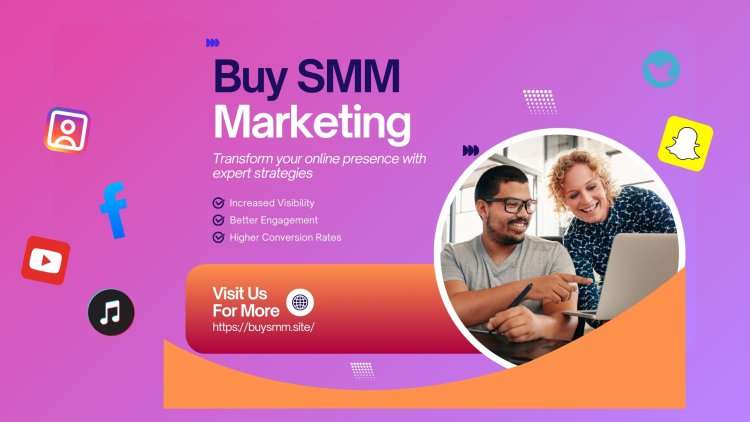What is Social Media Boosting, and Is It Worth It for My Brand
In the digital age, social media is a vital tool for building brand awareness, driving traffic, and engaging with audiences.
Share this Post to earn Money ( Upto ₹100 per 1000 Views )

In the digital age, social media is a vital tool for building brand awareness, driving traffic, and engaging with audiences. Many businesses and influencers seek ways to amplify their social media presence, and one popular strategy is social media boosting. But what exactly is social media boosting, and is it worth it for your brand? Let’s explore the concept in detail to help you decide whether it’s the right choice for your social media growth.
What is Social Media Boosting?
Social media boosting refers to the practice of promoting your content to a larger audience, often through paid advertisements or by leveraging third-party services. Platforms like Facebook, Instagram, Twitter, and LinkedIn allow users to "boost" posts, which means increasing the visibility of specific content in front of more users beyond your organic reach. This can be done using the platform’s ad system, where you pay for additional exposure based on factors like targeting options, budget, and duration.
In addition to platform-based boosting, there are third-party services that claim to increase engagement, likes, shares, and followers. These services typically promise to help you grow your social media presence faster, sometimes through non-organic methods such as buying followers or engagement.
The Benefits of Social Media Boosting
-
Increased Visibility: One of the most significant advantages of boosting posts is the potential for reaching a much larger audience. Organic reach on platforms like Facebook and Instagram is often limited due to algorithms that prioritize content from close friends and family. Boosting posts helps you bypass these limitations, ensuring your content gets in front of more eyes.
-
Targeted Reach: Social media platforms offer sophisticated targeting tools that allow you to narrow down your audience based on factors such as location, interests, demographics, and behaviors. This means you can promote your content to the people most likely to engage with it, leading to more meaningful interactions and conversions.
-
Faster Growth: For businesses or influencers looking to quickly grow their presence, boosting posts can expedite the process. By paying for exposure, you can accelerate your reach, attract followers, and gain attention much faster than relying on organic growth alone. This can be particularly useful for time-sensitive campaigns, product launches, or promotions.
-
Increased Engagement: When your posts are boosted and reach a wider audience, the potential for engagement (likes, comments, shares) also increases. Higher engagement can, in turn, improve your content’s visibility in the platform's algorithm, leading to even more organic reach. This creates a cycle of growth that can be very beneficial for your brand.
The Drawbacks of Social Media Boosting
-
Cost: The most obvious downside of social media boosting is the cost. To effectively boost your posts and reach a larger audience, you’ll need to allocate a budget for ads. While this can be a good investment for brands with the resources to support it, it can become expensive, especially for smaller businesses or individual influencers with limited budgets.
-
Superficial Engagement: Boosting posts can result in increased visibility, but it doesn’t always translate into meaningful engagement. For example, you may see an increase in likes or follows, but these new followers may not be genuinely interested in your brand. Superficial engagement can lead to inflated metrics that don’t necessarily reflect the true impact of your content.
-
Risk of Fake Followers and Engagement: If you turn to third-party services for social media boosting, there’s a risk of purchasing fake followers, likes, or engagement. While this may seem like a shortcut to growth, it can harm your credibility in the long run. Fake followers don’t interact with your content, and a high follower count without real engagement can hurt your reputation and brand trust.
-
Dependence on Paid Strategies: Relying too heavily on social media boosting can create a dependence on paid ads for visibility. While boosting can deliver short-term results, it’s important to also focus on organic growth strategies like creating high-quality content, engaging with your audience, and leveraging social media trends. Over time, you don’t want to rely entirely on ads to keep your brand visible.
Is Social Media Boosting Worth It?
Social media boosting can be highly beneficial if used strategically. It’s a great tool for increasing visibility, reaching targeted audiences, and gaining traction quickly, especially for time-sensitive promotions or businesses looking to establish a presence. However, it’s essential to approach boosting with a clear strategy and a well-defined goal. Without a solid plan, boosting can lead to wasted resources and superficial engagement.
For long-term success, boosting should complement organic growth strategies, not replace them. Focus on creating compelling content that resonates with your audience, building authentic relationships, and cultivating engagement. When combined with a balanced approach to boosting, these efforts will lead to more meaningful and sustainable growth for your brand.
In conclusion, social media boosting can be a powerful tool in your marketing arsenal if used wisely. It’s worth considering if you have a specific goal in mind, such as increasing brand awareness or promoting a campaign. However, make sure it’s part of a broader strategy that focuses on real engagement and building a genuine online presence.















